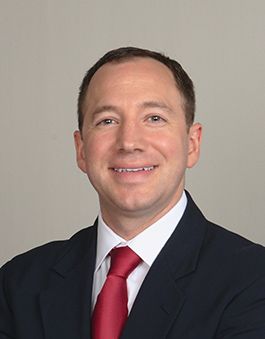Pipeline Extra: Mastering the Microbiome
As the microbiome "moves into the mainstream," Pharm Exec looks at how industry activity in the space is heating up.
Over the last couple of years, personal care brand Dove has been promoting its body wash products as “microbiome friendly.” This being a largely unfamiliar term to the casual consumer of skincare lotions, Dove’s marketing campaign adopted an explanatory tone, explaining how our skin microbiome comprises “a community of billions of friendly living microorganisms,” which are vital to promotion of healthy skin. Dove’s Bodywashes, it is claimed, leave you with “beautifully nourished, soft skin, while respecting your skin’s microbiome.”
John Creek

Until recently, the microbiome was the preserve of the probiotic and fermented foods and supplements sector, which extols the virtue of gut health. But as our understanding of the microbiome grows, “so does consumer interest in self-care solutions to support microbiome health,” asserts Dr. John Creek, Global R&D Health Disruptive Innovation at leading consumer health company, RB. Creek told Pharm Exec, “We're starting to see the microbiome transitioned to the mainstream. People understand probiotics and have become accustomed to seeing food-type products with soft, or more functional, claims. It really does feel like consumers now understand that their bodies are living in symbiosis with this huge range of organisms.”
With consumers now more understanding of the microbiome’s links to digestive and skin health, says RB’s R&D Health Director, External Product Development, Outside Innovation, Annemie Venter, “now we must begin to help them understand that the microbiome goes way beyond this, and also has potential to influence different areas of health and health needs.”
As interest in the microbiome grows in the consumer market, so is it becoming a focus for biopharma companies. Activity in the field of live biotherapeutics- that is, using living organisms as medicine- has been gathering momentum in the biopharma industry. In March, AstraZeneca signed a $20 million collaboration deal withSeres Therapeutics (Cambridge, MA) to work on microbiome medicines in immuno-oncology. Ritter Pharmaceuticals is developing a microbiome-based drug (RP-G28, currently in Phase II trials), which is “believed to be the first therapeutic designed to reduce the symptoms of lactose intolerance.” AbbVie has announced a collaboration with Synlogic (Cambridge, MA), a company applying synthetic biology to beneficial microbes to develop novel, living medicines, to develop an oral treatment for inflammatory bowel disease. And just last month, Merck signed a research deal with 4D Pharma (Leeds, UK) to use its MicroRX platform to turn living bacteria into vaccines. In the area of recurrent Clostridium difficile infection, Rebiotix’s (Roseville, MN) RBX2660 is currently in a Phase 3 clinical trial, while Vedanta Biosciences’ (Cambridge, MA) VE303 candidate, consisting of eight types of clonal human commensal bacteria strains selected for their ability to provide colonization resistance to C. difficile, is currently in Phase 2.
Annemie Venter

While, from a consumer perspective, says Venter, RB has “a number of categories that we are highly interested in-hygiene; sexual health; wellbeing and respiratory health; digestive relief; and in the nutrition space we have vitamins, minerals and supplements,” Creek told Pharm Exec that the company is also engaged in establishing partnership with biopharma companies “that have identified unique technology or have found compelling propositions that we could transition into consumer product-type formats.” For Creek, “RB has an interesting role to play in the industry, because we are beginning to see start-ups and smaller companies enter the space and make aggressive claims that might not be supported by really proven science.” He explains, “We can be a gatekeeper in ensuring that the partnerships we set up are geared towards delivering proven science across all of these benefit spaces. We're really well prepared and investing as a company to be a leader in this space.” RB is looking for partners that have clinical or, at least, preclinical science that “shows the effect of their product and with proof behind the science they're talking about,” Creek explains. “We're looking for active organisms. We're looking for prebiotic and post-biotic compounds. We're really looking across the entire spectrum of the benefits space, and for companies that have a differentiated insight into the space that is built on a real scientific, human, or consumer insight.”
The microbiome space isn’t a brand-new area for the biopharma industry, of course. It is recovering from a setback in 2017, when Seres Therapeutics’ SER-109 pill, containing bacterial spores isolated from stool samples for patients with recurring C. difficile infections, failed at a Phase 2 trial. “That was one of the first examples where live biotherapeutics and the idea of bugs as drugs was tested in an FDA trial and failed to meet endpoints,” says Raja Dhir, co-founder and co-CEO of Seed Health. “I don't think it set the field back exactly, but the investment community started to question what the future would be.” Today, however, Dhir told Pharm Exec, microbiome companies are more well capitalized and mature than they were just a year and a half ago. “Their pipelines are a lot more sophisticated, their assays are very well validated, and the endpoints are very well-defined,” he says. “In our discussions with FDA, there seems to be a base level of knowledge and standardization across the field now that is allowing for a lot of investor confidence.”
Ara Katz

Seed Health, co-founded by Dhir and co-CEO Ara Katz, operates as a foundry model, wherein they partner with leading scientists in the field to “to move breakthrough research into the clinic and through commercialization,” says Katz. Its first foundry company, LUCA Biologics, headed by Dr. Jacques Ravel, announced in August plans to develop live biotherapeutics for widespread, unmet medical needs in women's health. The company's first therapeutic targets urinary tract infection (UTI), which is estimated by the World Health Organization to impact half of women globally and is the most common bacterial infection in the US. FDA trials are anticipated to be led by Harvard Medical School faculty and conducted at Massachusetts General Hospital, with patient recruitment beginning next year.
Seed Health-along with Rebiotix, Seres, Siolta Therapeutics, and Vedanta Biosciences-is a member of the Microbiome Therapeutics Innovation Group (MTIG), a trade organization working directly with FDA. Dhir says that FDA is “working closely with leading companies to regulate the space as effectively as possible.” The Agency “is very interested in finding solutions for the public and for human health but is going about it very cautiously.” From the consumer side, RB’s Creek believes, “It's up to us to show smaller companies how to enter the space. There are a number of responsible early-entrants to the space that are setting a positive tone and are acting to self-regulate, monitor, and share their best practices in terms of claims.”
While there hasn't been an FDA-approved live biotherapeutic yet, there are “a couple of rationally defined cocktails in Phase 3, but a lot of companies are still struggling to determine which tests to use going into Phase 3,” says Dhir. He points to two factors that he says make LUCA Biologics’ announcement “a lot more interesting than a traditional microbiome company.” First is that LUCA Biologics’ focus is outside of the gut. “While the gut is complex, the vaginal microbiome has a lot more simplicity in terms of species level variation. It took over 10 years of mechanistic research before we understood exactly which organisms could have a long-term, stabilizing effect in the vagina, compared to the gut, but now we're in a place where we know what these organisms are.” With Phase 1 likely to be “extremely straightforward,” lasting around 12 weeks, LUCA Biologics’ goal is to have Phase 2 “kicked off before the end of next year.” If the company gets back the data it is anticipating, it could have a pivotal trial completed and a registered product within three years or less, says Dhir. The second factor, says Dhir, is that it's much easier to recruit for UTI because of the prevalence of the condition. “A lot of people don't want to sign up for gut microbiome trials because they don't want to take placebo. For people with UTI, however, recurrence is very rea. It's an unmet medical need. There really is no treatment other than continued antibiotic use.”
Raja Dhir

Looking further forward, Dhir sees applications for microbiome therapies in cancer immunotherapy, in early-intent interventions-e.g., for preterm babies or infants that have necrotizing enterocolitis-as well as in gut disorders such as inflammatory bowel disease, irritable bowel syndrome, Crohn's, and ulcerative colitis. “When we start to see the role that microbial communities play distally in the body, it's going to be really interesting: Parkinson's, Alzheimer's, etc. There's already a company in Phase 2 trials for Alzheimer's by blocking the microbial metabolites in the brain.”
Creek adds: “It’s amazing what we're learning about the microbiome right now. It's such an intersection of different disciplines coming together. You've got biology, you've got health, you've got chemistry. We may not understand the full implications of how it affects each area of health, but we're focused on where we can create meaningful product propositions that deliver benefits.”
Key Findings of the NIAGARA and HIMALAYA Trials
November 8th 2024In this episode of the Pharmaceutical Executive podcast, Shubh Goel, head of immuno-oncology, gastrointestinal tumors, US oncology business unit, AstraZeneca, discusses the findings of the NIAGARA trial in bladder cancer and the significance of the five-year overall survival data from the HIMALAYA trial, particularly the long-term efficacy of the STRIDE regimen for unresectable liver cancer.
Cell and Gene Therapy Check-in 2024
January 18th 2024Fran Gregory, VP of Emerging Therapies, Cardinal Health discusses her career, how both CAR-T therapies and personalization have been gaining momentum and what kind of progress we expect to see from them, some of the biggest hurdles facing their section of the industry, the importance of patient advocacy and so much more.
Phase III Trials Show Povorcitinib Significantly Improves Hidradenitis Suppurativa Outcomes
March 19th 2025In the Phase III STOP-HS1 and STOP-HS2 trials, results show that patients treated with povorcitinib for hidradenitis suppurativa experienced a ≥50% reduction in the total abscess and inflammatory nodule count.